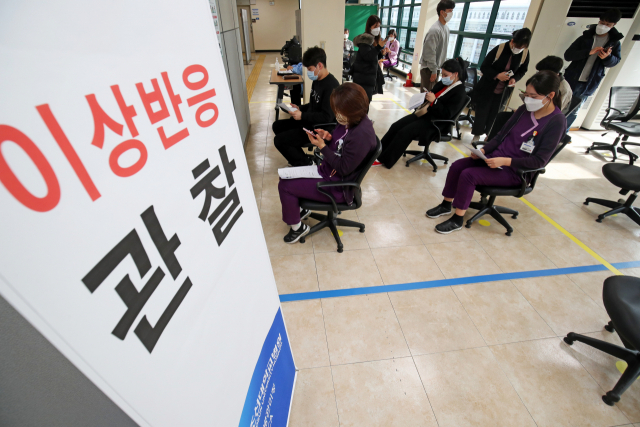Most abnormal symptoms are’muscle pain’… After fever, headache, and chills
1.77% level of inoculation… The younger you are, the higher the rate of reporting adverse reactions.
 viewer
viewer
It was confirmed that the number of cases in Korea that reported adverse reactions after receiving a new coronavirus infection (Corona 19) vaccine appeared high in women and in their twenties. According to the Corona 19 Vaccination Response Promotion Team on the 15th, 4,757, 1.77% of the 269,047 people who received the vaccine for one week on the last 7 to 13 reported suspected adverse reactions.
The reporting rate of adverse reactions according to gender was 2.1% for women, which was higher than for men (1.0%). By age group, the reporting rate of adverse reactions was higher as the younger were, such as 3.6% in their 20s, 1.7% in their 30s, 1.2% in their 40s, 0.8% in their 50s, and 0.5% in their 60s. The most common adverse reaction symptoms were muscle pain (63.5%), followed by fever (60.7%), headache (40.6%), and chills (36.7%). The quarantine authorities explained that most of these symptoms are naturally occurring during the immunity formation process.
The reporting rate by vaccination institution was highest in nursing hospitals (5.3%), followed by hospital-level medical institutions (2.2%), nursing facilities (0.9%), first responders (0.4%), and corona 19 treatment hospitals (0.4%). The reporting rate by vaccine type was 1.9% for AstraZeneca vaccine and 0.4% for Pfizer vaccine.
The promotion team identified adverse reactions after vaccination in about 18,000 (3% of those vaccinated) who agreed to the letter survey among the cumulative domestic vaccinations (588,958). As of the 13th, it was confirmed that 32.8% of the respondents to the text survey complained of discomfort after getting the vaccine.
Respondents who complained of discomfort after vaccination by age group were in their twenties with 9.8%. This was followed by those in their 30s (8.3%), in their 40s (7.2%), in their 50s (6.3%), and in their 60s (1.1%). As such, it was found that the younger the person feels discomfort after vaccination. The most uncomfortable symptoms they complained of were pain at the vaccination site (28.3%), followed by muscle pain (25.4%), fatigue (23.8%), headache (21.3%), and fever (18.1%). Among the respondents, 2.7% of the respondents visited medical institutions such as hospitals. By type, there were outpatient visits (1.6%), emergency room visits (1.0%), and hospitalization (0.1%).
/ Intern reporter Park Shin-won [email protected]
< 저작권자 ⓒ 서울경제, 무단 전재 및 재배포 금지 >
